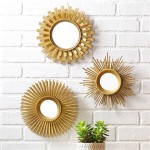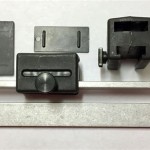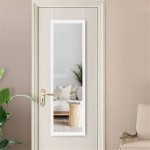How To Make An Arched Mirror Frame In Sketchup
SketchUp provides a robust and intuitive platform for designing various objects, including an arched mirror frame. This tutorial outlines the process of creating such a frame within the SketchUp environment.
The first step involves establishing the base geometry. Begin by drawing a rectangle using the Rectangle tool. This rectangle represents the overall dimensions of the mirror, including the frame. The dimensions can be adjusted later.
With the rectangle drawn, the next stage focuses on creating the arched top. Select the Arc tool. Several methods exist to create the arch, but a straightforward approach is the two-point arc method. Click on the two top corners of the rectangle to define the endpoints of the arc. Then, click a third point above the rectangle to define the height and curvature of the arch. This action effectively replaces the top straight edge of the rectangle with a curved arc.
To create the frame's thickness, use the Offset tool. Select the arched shape created in the previous step. The Offset tool creates a parallel, offset shape. Input a desired offset distance, representing the frame's width. This value determines the frame's thickness and should be adjusted based on the overall scale of the mirror.
The next step is to extrude the frame to provide depth. Select the Push/Pull tool. Click on the inner face of the frame (the area between the original arched shape and the offset shape). Pull the face upwards to create the frame's thickness. This extrudes the frame, giving it a three-dimensional form.
To represent the mirror surface, draw a rectangle within the inner edge of the frame. Ensure the rectangle fits snugly within the frame's inner boundary. This rectangle serves as a visual representation of the mirror within the frame.
Refinement is key to achieving a realistic appearance. Edges can be softened or rounded using the Eraser tool with the Ctrl key (or Cmd key on Mac) held down. Select the Eraser tool, press and hold Ctrl (or Cmd), and click on the edges that need softening. This creates a more visually appealing, rounded edge profile.
Adding materials enhances the realism of the design. SketchUp's Materials panel provides a vast library of pre-loaded materials. Select the frame's faces using the Select tool. Navigate to the Materials panel, choose a suitable wood material, and apply it to the frame's surfaces. Similarly, select the inner rectangle representing the mirror and apply a reflective material.
Further detailing can be achieved by adding a backing board to the mirror. Draw a rectangle slightly larger than the outer dimensions of the frame. Position this rectangle behind the mirror assembly. This provides a visual representation of the backing that typically supports a mirror.
To create a hanging mechanism, draw small circles on the back of the frame using the Circle tool. Position these circles where hanging hardware would typically be placed. Extrude these circles inward using the Push/Pull tool to create small cylindrical protrusions simulating the hanging hardware.
The final step involves using SketchUp's rendering capabilities. Various rendering plugins and styles are available within SketchUp. Applying a suitable render style enhances the visual presentation of the model, showcasing the materials and lighting effects. Different styles highlight specific aspects of the design. Experimenting with different rendering styles allows for exploring various visual representations of the arched mirror frame.
Adjusting the camera angle and positioning is crucial for presenting the design effectively. Use the Orbit, Pan, and Zoom tools to navigate the view and showcase the mirror frame from various perspectives. This allows for highlighting specific design elements and creating visually compelling presentations.
Throughout the design process, utilize SketchUp's dimensioning tools to accurately measure and adjust component sizes. This ensures precise modeling and facilitates modifications if needed.
Remember that these instructions provide a basic framework for creating an arched mirror frame. The design can be customized further using various SketchUp tools and techniques. Exploring these advanced features opens up even more possibilities for creating unique and intricate designs.
Experimentation and practice are key to mastering SketchUp's functionalities. Exploring different tools and techniques leads to discovering new design possibilities and enhancing proficiency in creating detailed models like this arched mirror frame.
Pottery Barn Sansome Arch Wall Mirror 3d Warehouse
Wood Framed Mirror With Ledge 3d Warehouse
Wall Mirror 3d Warehouse
Joss Main Waltham Arch Wood Wall Mirror 3d Warehouse

017 Sketchup Us Arches Basic Construction
Vanity Mirror 3d Warehouse

Glass Mirror Mosaic Tile Sketchup How To Model It

Circular Arches In Architectural Facades Sketchup

Part Of Offset Goes The Opposite Direction Sketchup Community

Curved Door Furniture Design Sketchup








